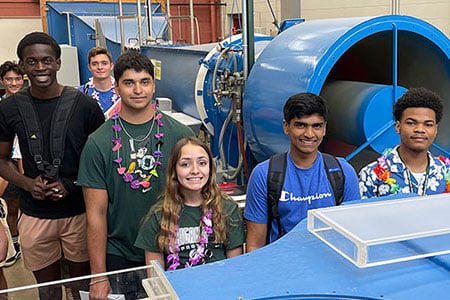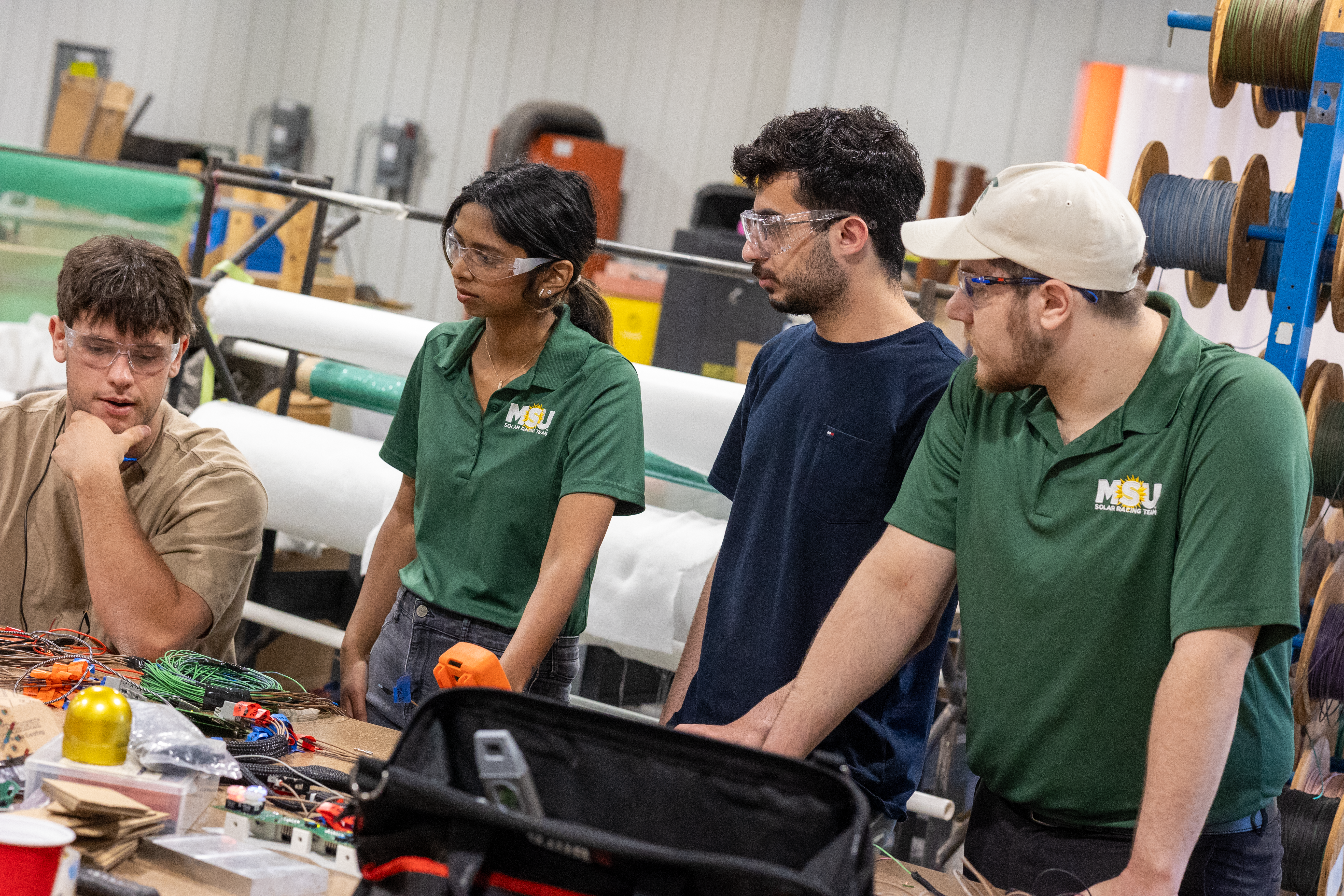U.S. patent no. 10,753,779 was awarded for a mass flow meter that measures mass fluid flow of liquids and gasses in real time—without any rotating parts, orifices, or pressure-related devices.
John Foss, professor emeritus of mechanical engineering at Michigan State University, and his former student Vytau K. Virskus of Millenium Energy Company have been awarded U.S. patent no. 10,753,779 for a mass flow meter that measures water flow and energy use in heating/cooling systems.

"The meter consists of a critically designed array of flow sensors that respond to the kinetic forces acting upon them by the passing fluid," Foss explained. "The meter's novel geometry converts these forces to torques that are summed and converted to an electronic signal providing an accurate mass flow in the pipe."
The real-time measurement of mass fluid flow of liquids and gasses in pipes and conduits is an important and often critical capability in innumerable commercial and industrial processes, including energy supply systems, municipal infrastructure, and others, Foss continued. Mass flow measurements have become particularly significant as the need to determine the thermal flow of heating and cooling fluids increases.

While flow meters currently on the market generally achieve their intended purpose, there has been a growing need for a new and improved device with greater accuracy, application flexibility, and durability.
The novel Foss/Virskus mass flow meter is designed to be completely scalable based on the diameter of the pipe or conduit. It is also bi-directional and has high accuracy for non-uniform flows. It can provide a relational output signal for partially filled pipes.

"Our design is revolutionary because it has no rotating parts, orifices, or pressure-related devices to measure mass flow, which makes it suitable for a wider variety of applications," said Virskus.
The first four-inch prototype has been constructed and will soon undergo laboratory performance testing. Scaling down to very small medical applications and up to very large industrial flow measurements are under consideration.
About John Foss: Foss received his BSME, MSME, and PhD from Purdue University and has been a member of the mechanical engineering faculty at Michigan State University since 1964. He served as the National Science Foundation (NSF) Program Director for Fluid Dynamics and Hydraulics (1998-2000). His research specialties include advanced topological flow analysis, complex flow measurements, and applied problems in turbulent flows. He is a fellow of the American Society of Mechanical Engineers (ASME) and the American Physical Society and a member of the Society of Scholars of Johns Hopkins University. He is also a Chartered Physicist (CPhys) of the Institute of Physics (IOP), a distinct honor signifying recognition by one's professional peers for exceptional contributions to the physics enterprise and outstanding physics research. He holds seven (previous) patents related to fluid mechanics.
About Vytau K. Virskus: Virskus is the principal of Millenium Energy Company. He earned a BS in mechanical engineering at Michigan State University in 1975 and a JD at Thomas M. Cooley Law School. He began his career in 1975 as the environmental systems manager and operations engineer for MSU, responsible for the installation and development of a campus-wide building automation and energy management system that ultimately serves more than 20 million square feet. His experience includes the design of commercial building automation systems, development and construction of numerous power generation and energy savings performance contract (ESPC) projects, and he has served as an energy management consultant for numerous industrial, institutional, and commercial clients. He was previously awarded US patent no. 9,519,297 for Dynamic Differential Energy Control of Hydronic Heating or Cooling Systems (E~flow), a mathematical algorithm that uses instantaneous building energy demand as the primary control variable to manage heating or cooling energy supply to buildings in real time.
Story courtesy of Jenn Virskus, Millenium Energy Company.





